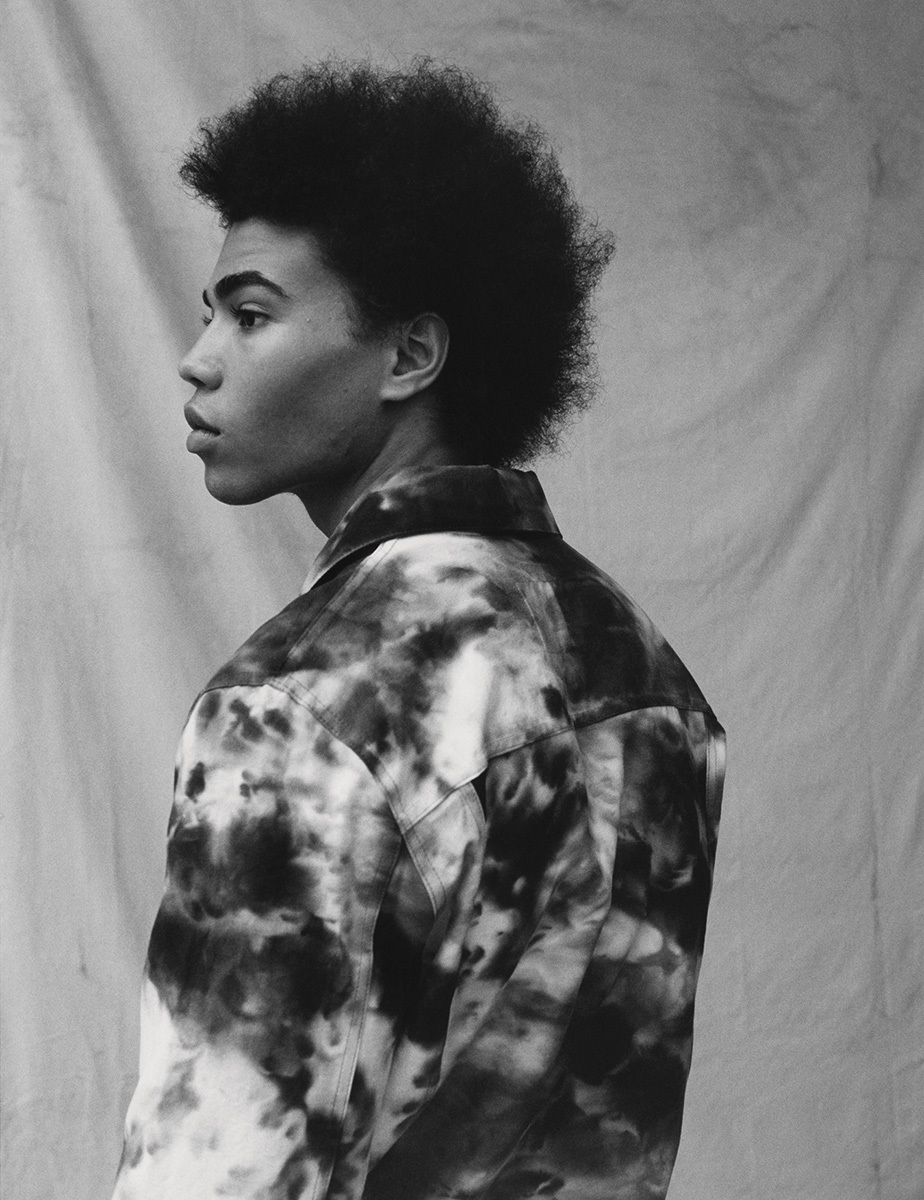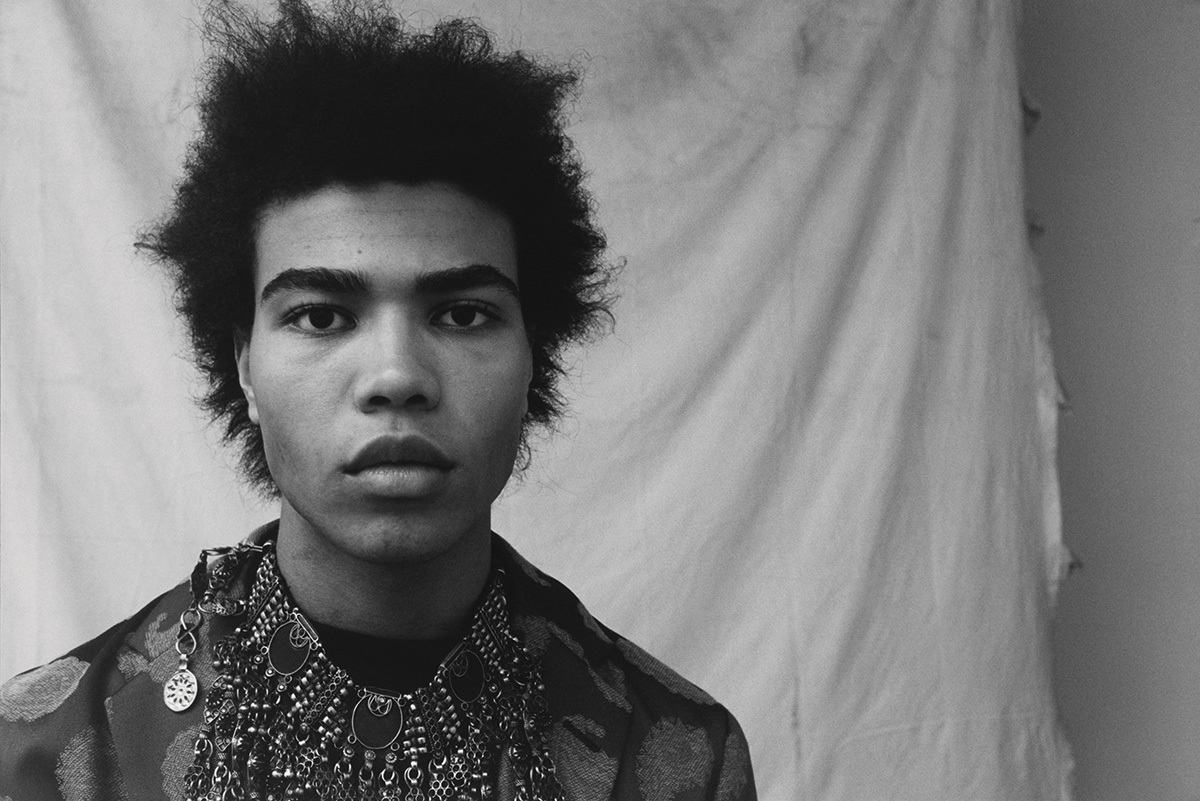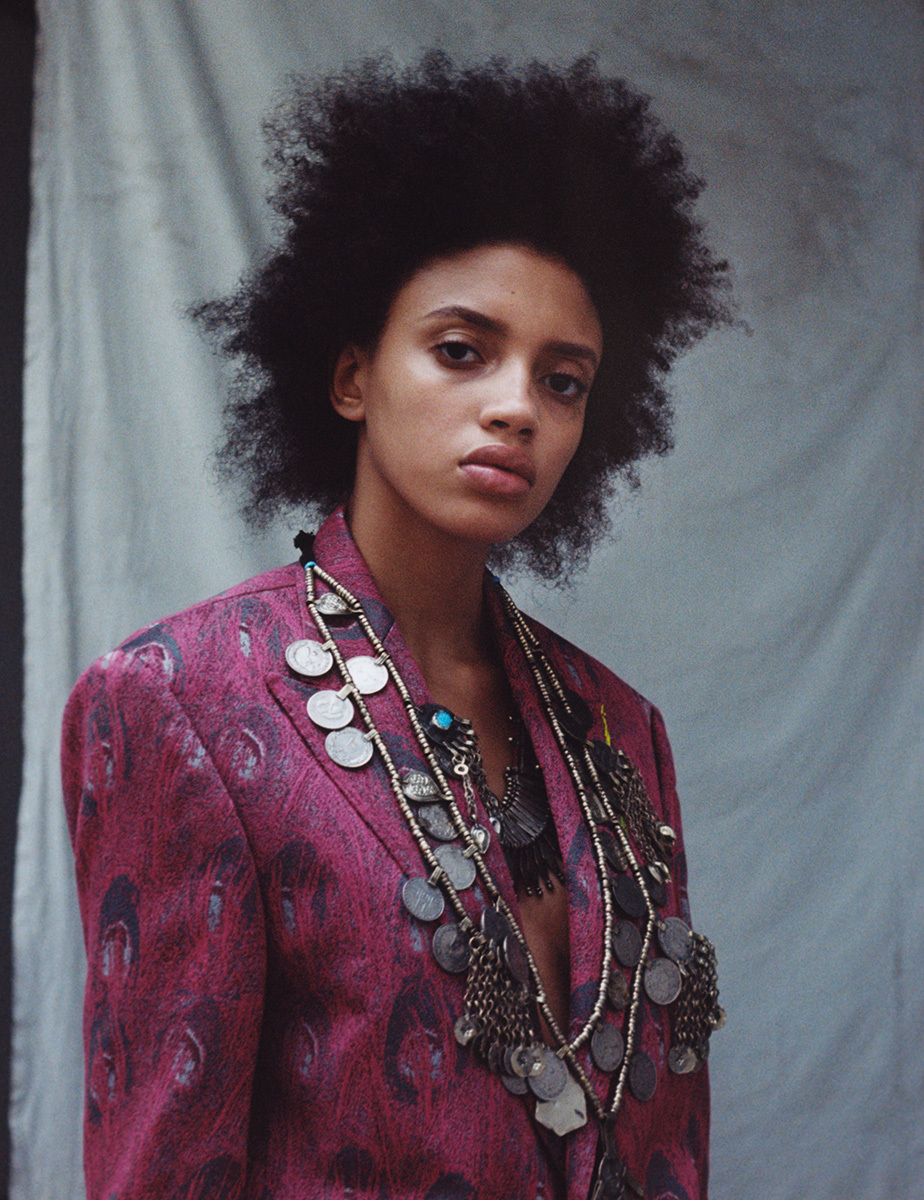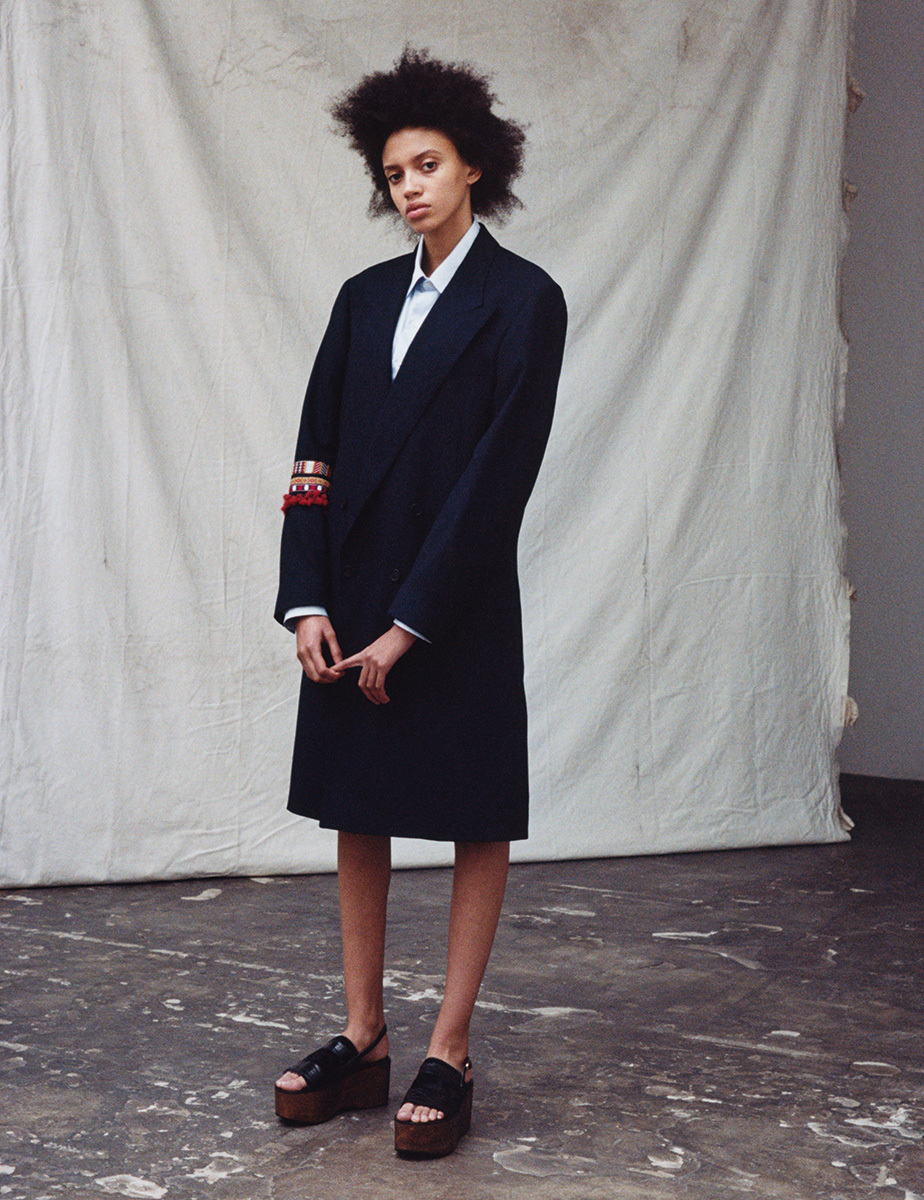Walking into Casely-Hayford HQ, in the backstreets of London’s Seven Sisters, you can’t but help but be hit by the feeling of a home away from home. Despite the vast warehouse set-up, the workspace has all the personal touches and small details of a cozy living room, albeit a very fashionable one. Upon entering, you’re greeted by designer Joe Casely-Hayford’s wife Maria, who helps run the business, and to your left is a friendly embroider called Anne who meticulously works on the intricate needlework for a pair of jeans. In the back, a record player wafts Kaytranada’s 99.9% out into the studio, (Joe’s choice). To your right, a bookcase with everything from books on traditional Palestinian costume to a sizeable collection of old issues of i-D and The Face. “I found fashion really from a cultural standpoint,” Joe explains. “When I saw the first issue of i-D, I saw people who were outsiders and that gave me hope in a socio-political sense. Prior to that black people did ‘black things.’ What I have found interesting is through my kids, and what I have seen from one generation to the next, is that you can be where you want to be now. Thirty years ago we were fighting for our self-expression. Thirty years ago it was very difficult to operate outside those parameters.”

The patriarch of the Casely-Hayford family as well as a menswear design legend, Joe has been at the vanguard of British fashion for over 25 years, honing his craft at the Tailor and Cutter Academy on London’s Gerrard Street as well studying History of Art at the Institute of Contemporary Arts. Charlie Casely-Hayford, his son, studied History of Art, too, but across The Mall at Central Saint Martins, with ambitions to work within the art world. “I remember asking my parents when I was 13 if I could work in fashion because at that point it was all new,” Charlie recalls over a cup of tea. “My parents said this was the last thing they wanted me to do because the industry is so difficult, but it all came back around in its own way.” Inspired by London’s melting point of cultures, together with the unfiltered stream of self-expression that Saint Martins offered, Charlie felt compelled to be a part of the industry and the two joined forces to start the family brand in 2009.

With traditional tailoring at its heart (Joe used to be Creative Director of Gieves and Hawkes before setting up the family business), Casely-Hayford marries the sartorial codes of Savile Row to a modern aesthetic. “I think that is at the core of what Casely-Hayford stands for. We attract men and women who may have had no interest in tailoring or who don’t have to wear suits every day but choose to so they can make a statement,” Charlie says. After amassing a following that reads like the crème de la crème of British music, (think Jamie xx, James Blake, and the Disclosure brothers), the father-son duo decided to explore unchartered territory, and in their spring/summer 17 Apex Twin show, designed a collection for the women who had been accompanying their partners on trips to the HQ for fittings and who had long craved a piece of the Casely-Hayford world. “We have always had a woman’s following, even just producing the menswear. Every season, we were getting a lot of women buying and wearing our clothes oversized. It felt like a natural progression to open it up.” Casely-Hayford specialize in a made-to-measure service, opening up their homely atelier to clients who can choose everything from fabric, lining, trims, and buttons to completely customize their garments. With the womenswear, Joe and Charlie pushed the brand further, offering everything from biker jackets, patterned jeans, and custom dresses. “We had been developing it for quite a few years subconsciously. We had a discussion about there being something missing from womenswear and we knew we could make a contribution. We wanted to make clothes that were easy but not become complacent,” asserts Joe.

The collection, Apex Twin, (modeled here by Charlie’s cousins Nathaniel and Ayaana), was born of out of the two’s love of 70s rock and 00s grime, although the parallels aren’t blindingly obvious. “I guess I grew up in the internet generation,” ponders Charlie. “My dad grew up around the punk scenes and me the grime world, so the Apex Twin collection is really about the convergence point of those two genres of music — the influence they’ve had on both of us during our prospective decades and how they’ve affected our growth periods in the fashion industry. Of course, it’s a direct reference to Aphex Twin, but it was more about the two genres of music at the apex.” Starting inspirations were discussed in conversations over flights to Japan and stolen moments in the studio. “We are very rarely in the same place at the same time,” Joe laughs. “But our process rarely involves sitting down and sketching. We talk about the development of society, the juxtaposition of being in the city and how in rural areas evolution is controlled. We feel it evolves in a softer, gentler way. Urban environments have harsh changes that happen every day but it makes them very exciting.”
It is communication, unspoken and not, that is at the heart of Casely-Hayford. While Charlie and Joe aren’t carbon copies of each other, the interest in identity, communities, and subcultures that express themselves in their dress has been passed on from father to son. “I like the idea of social uniforms,” explains Joe. “But with that I like to subvert, I enhance and I think that is what our approach is about.” Charlie finishes his sentence, “and with that tailoring provides the perfect canvas.” While the fast fashion machine churns on and the industry struggles to catch up with the relentless schedule it’s put in place for itself, Joe and Charlie seemed committed to slowing things down, returning to the importance of craft and quality rather than quick collaborations and pre-fall offerings. “Craft has a really huge role in 21st century life,” concludes Joe. “It offers an alternative to careless consumer-driven fashion. We try to bring that to Casely-Hayford, to convey emotion in the things we do and provide a new perspective that is both jarring but that in end is really positive.”
Credits
Text Lynette Nylander
Photography Maxwell Tomlinson
Styling Max Clark
Hair Shiori Takahashi. Makeup Danielle Kahlani using Anne Semonin. Styling assistance Bojana Kozarevic.
Models Ayaana Aschkar-Stevens and Nathaniel Casely-Hayford.
Ayanna and Nathaniel wear all clothing Casely-Hayford.
